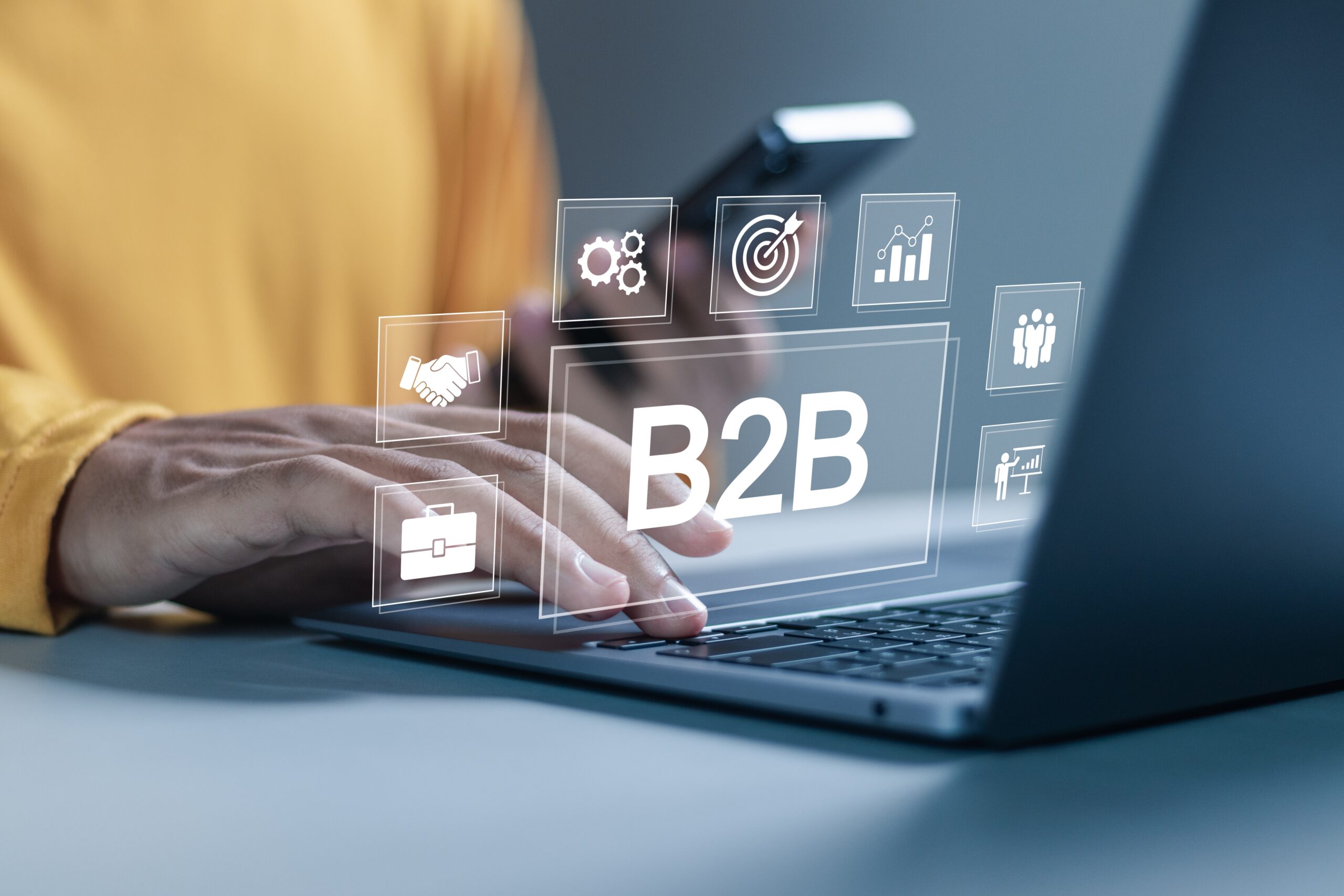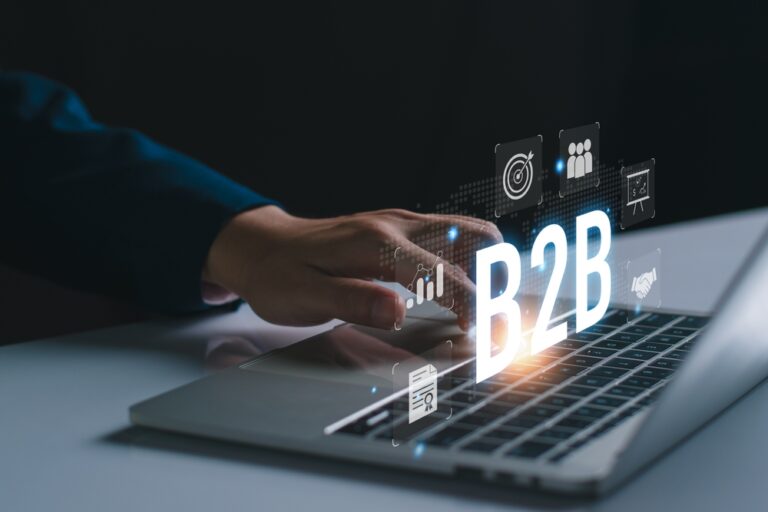B2B as self-service
A new era in B2B commerce is upon us, marked by heightened expectations for smooth and enjoyable purchasing experiences. This shift is largely influenced by millennials, who are progressively taking on decision-making roles within B2B organizations.
According to Forrester, it’s anticipated that by 2025, 70% of B2B buyers will be millennials. Having grown accustomed to the efficiency and constant availability of online shopping, they are set to drive significant changes in B2B practices.
One of the most notable transformations in the industry is the emphasis on self-service experiences for B2B buyers. Creating intuitive and streamlined self-service storefronts is essential for engaging this emerging generation, as their prior shopping experiences have established this expectation as a baseline requirement.
In this blog, we will explore the reasons why buyers favor self-service options, the advantages these options offer to businesses, and how you can implement a self-service strategy starting today.

B2B buyers prefer self-service
B2B buyers are increasingly favoring self-service options. According to Gartner, 83% of buyers prefer managing their orders and accounts online, and this trend is growing. Even more striking, 100% of buyers want to have the option to self-serve during all or part of their purchasing journey, with 83% favoring digital self-service channels over interacting with sales representatives.
Understanding millennials helps clarify these preferences. This generation grew up with the internet, enjoying its early, open landscape before it transformed into a realm of walled gardens and constant login requirements. They’ve observed the internet’s progression into a highly optimized, user experience-driven, globally connected platform, which has shaped their expectations.
Additionally, millennials are an independent and practical generation, now fully engaged in their careers, families, and personal aspirations. They often lack the time or patience for outdated, cumbersome processes amid a sea of competing media.
Self-service offers two key advantages: it gives buyers more control and free time, while also driving increased sales and customer loyalty for businesses.
Self-service is a valuable asset for B2B businesses, yet many have yet to fully capitalize on its potential, often due to reliance on outdated platforms. Here are some of the primary benefits that self-service can bring to your organization:
Empower Sales Teams
While it may seem counterintuitive, self-service actually enhances the effectiveness of your sales representatives. It transforms their roles into more strategic positions that align better with buyers’ journeys. Although many buyers prefer to handle parts of their purchasing process independently, sales reps still play a crucial role.
This blended approach, combining self-service with occasional personal interaction, allows sales teams to dedicate more time to individual buyers, fostering authentic connections that millennials appreciate. Additionally, platforms like Shopify equip sales reps with essential tools, such as easy reordering and real-time access to product, pricing, customer, and order information. This enables them to engage with buyers at the right moment, ultimately helping to close deals more effectively.
Enhance Customer Retention
While self-service empowers sales teams, it also places greater control in the hands of your buyers, allowing them to manage their accounts, place orders, easily reorder shipments, and access support at their convenience. This increased autonomy leads to higher satisfaction and loyalty among customers.
With the right platform, businesses can provide faster response times and more consistent service experiences, ultimately fostering trust with their clients.
Another crucial element of self-service is personalization. Delivering personalized experiences has always been a cornerstone of exceptional customer service. With an advanced self-service portal, you can customize interactions to address the specific needs of your buyers, making the overall purchasing journey feel more relevant and efficient.

Improve Customer Data Collection
All successful commerce experiences rely on data and insights, and self-service significantly enhances your ability to collect this information. Access to better data leads to deeper insights into customer behaviors and preferences, enabling you to refine your services, anticipate needs, and identify areas where additional support may be required.
When utilizing a platform like Shopify for your self-service experience, you can seamlessly integrate other tools such as CRM, WMS, and ERP systems. This connectivity not only allows for more accurate and comprehensive insights but also streamlines your entire tech stack for improved efficiency.
Reduce Operational Costs
Self-service can significantly help your business lower operational costs. By minimizing the necessity for direct customer service interactions, a self-service experience enhances efficiency, simplifying everything from order placement to issue resolution. This means your staff spends less time and resources on each interaction, allowing you to manage more customers at a lower cost.
Additionally, with a more intuitive process in place, your support and sales teams won’t be overwhelmed by questions that the platform can address. Instead, they can redirect their efforts toward strategic initiatives that positively influence your business’s bottom line.
How to Implement B2B Self-Service
Implementing B2B self-service in your business can be approached in various ways, but here’s a simple and effective strategy to get you started. Here are a few key steps:
- Invest in an Innovative Platform With the rise of self-service in B2B, it’s clear that customer needs and expectations are continuously evolving. To stay ahead, it’s crucial to invest in a commerce platform that anticipates these changes and builds solutions accordingly.
- Focus on User-Friendliness As noted previously, millennials are often short on time and tend to avoid outdated experiences. To keep them engaged, it’s crucial to design a buying experience that is straightforward and intuitive. Self-service solutions are key in this regard, empowering customers to manage as much as possible through an easy-to-navigate interface. This not only simplifies the purchasing process for buyers but also saves your back-office team significant time. A user-friendly self-service interface enables any team member to quickly understand your commerce system and workflows, minimizing the need for specialized staff and the extensive training often required.
- Customize Wholesale Buying Experiences In the current B2B landscape, customers hail from various global markets and channels, making it vital to provide tailored experiences for effective self-service interactions. While this task may seem overwhelming, platforms like Shopify streamline the personalization process. You can ensure that each buyer receives the correct pricing, currency, and payment and shipping options, equipping them with the necessary information throughout their purchasing journey. Furthermore, Shopify facilitates easy customization of pricing and product availability through its admin interface or custom APIs, making it accessible for all customers.
- Tailor Storefronts Since millennials are accustomed to personalized shopping experiences, it’s essential to ensure your self-service platform meets their expectations. By leveraging the data you gather, you can provide customized product recommendations and promotions, as well as enhance your overall marketing and sales efforts. Another way to enhance the personal feel of your storefront is by developing tailored content, such as customized banner messages, blog sections, or promotional alerts that cater to your customers’ specific needs, industries, or geographical areas. This approach helps create a stronger connection with your customers and makes them feel more welcomed, encouraging repeat visits to your site.

Conclusion
We are witnessing a transformative shift in B2B commerce, driven by rising expectations for seamless and enjoyable purchasing experiences. This evolution is significantly influenced by millennials, who are increasingly taking on decision-making roles within B2B organizations. As Forrester projects, by 2025, 70% of B2B buyers will be millennials, a generation accustomed to the efficiency and convenience of online shopping, poised to reshape B2B practices.
A key aspect of this transformation is the growing emphasis on self-service experiences, which are crucial for engaging this new generation of buyers. The expectation for intuitive and streamlined self-service storefronts has become a baseline requirement, reflecting the shopping experiences they’ve come to expect.
In this blog, we have examined the reasons behind buyers’ preference for self-service options, the benefits these options provide for businesses, and practical steps for implementing a self-service strategy. The ability of B2B buyers to self-serve empowers them, enhances customer retention, improves data collection, and reduces operational costs.
To capitalize on the opportunities presented by self-service, B2B businesses should invest in innovative platforms like Shopify, prioritize user-friendliness, customize wholesale buying experiences, and personalize storefronts. By doing so, businesses can align their strategies with the evolving needs of their customers, ensuring long-term success in the new era of B2B commerce.
If you have questions or need assistance executing these strategies, our team is available at hello@tidalcommerce.ca.


